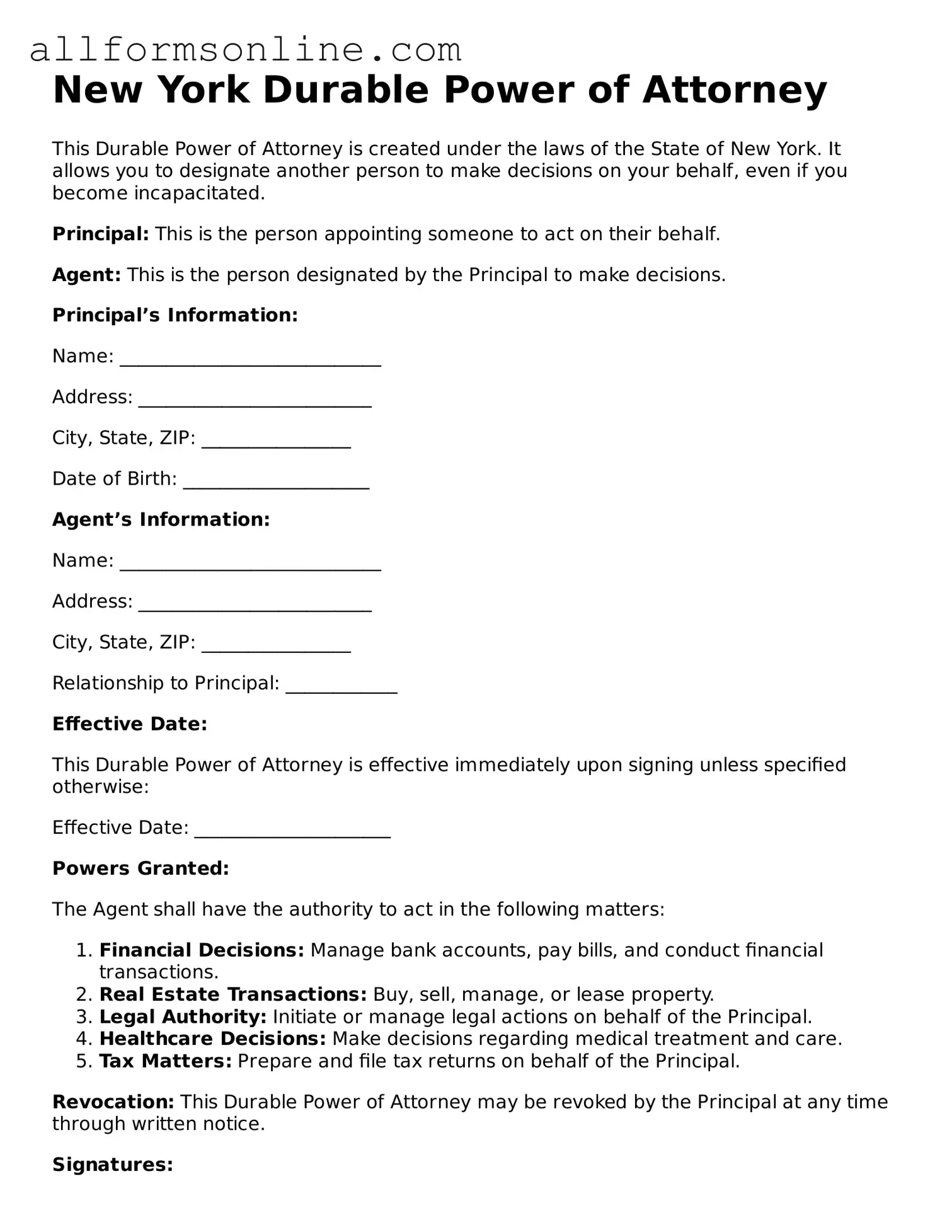What is a Durable Power of Attorney in New York?
A Durable Power of Attorney is a legal document that allows you to appoint someone to manage your financial affairs and make decisions on your behalf. This authority remains effective even if you become incapacitated. It ensures that your financial matters can be handled without interruption during times when you cannot make decisions for yourself.
Who can be appointed as an agent under a Durable Power of Attorney?
You can choose any competent adult to be your agent. This person can be a family member, friend, or professional, such as an attorney or accountant. It is crucial to select someone you trust, as they will have significant control over your financial matters.
What powers can I grant to my agent?
The Durable Power of Attorney form allows you to specify the powers you want to grant to your agent. These can include managing bank accounts, paying bills, filing taxes, and handling real estate transactions. You have the flexibility to limit or expand the powers based on your preferences.
Do I need to have a lawyer to create a Durable Power of Attorney?
While it is not legally required to have a lawyer, consulting one can be beneficial. A lawyer can help ensure that the document is properly completed and complies with New York laws. This can prevent potential issues in the future, especially if disputes arise regarding your agent's authority.
How do I revoke a Durable Power of Attorney?
If you wish to revoke your Durable Power of Attorney, you must create a written revocation document. This document should clearly state your intention to revoke the previous Power of Attorney. It is advisable to notify your agent and any institutions that may have a copy of the original document to prevent any confusion.
Is a Durable Power of Attorney valid if I move to another state?
A Durable Power of Attorney created in New York may not automatically be valid in another state. Each state has its own laws regarding these documents. It is important to check the laws of the state you are moving to and consider creating a new Durable Power of Attorney that complies with those laws.
What happens if I do not have a Durable Power of Attorney?
If you do not have a Durable Power of Attorney and become incapacitated, your loved ones may have to go through a lengthy and potentially costly court process to gain the authority to manage your affairs. This can lead to delays and stress for your family during an already difficult time. Establishing a Durable Power of Attorney can provide peace of mind for both you and your loved ones.
